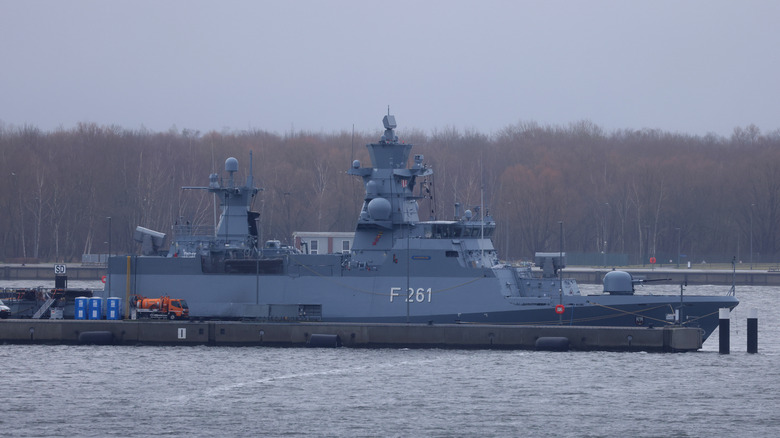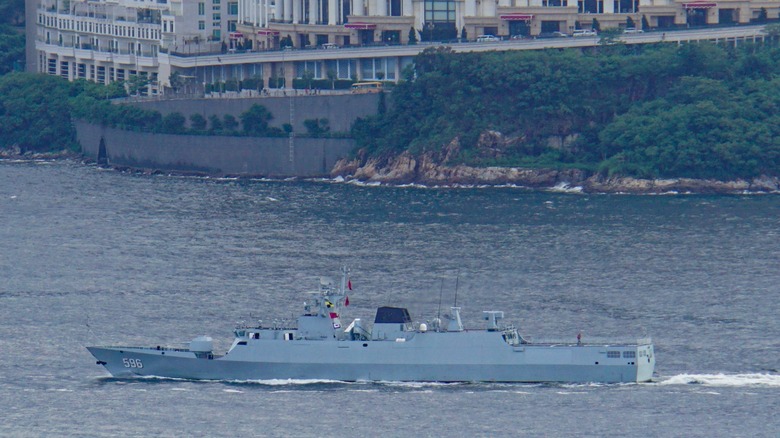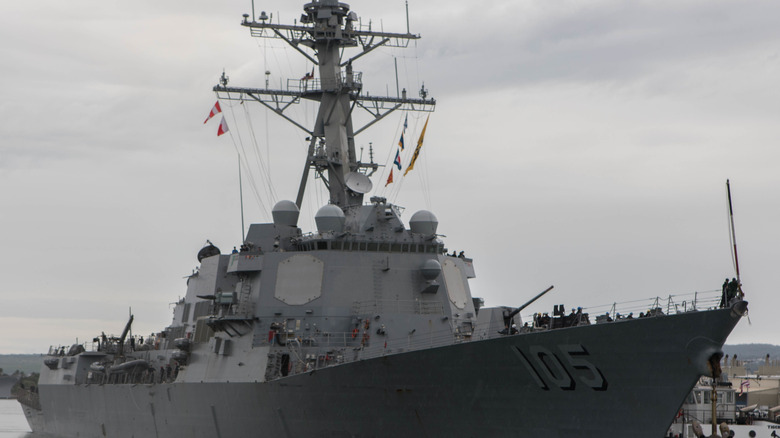Why The US Navy Doesn't Have Any Corvette Ships
As they became increasingly impractical, battleships are no longer used by the U.S. Navy. The corvette is another prominent type of ship that isn't currently employed by the American force. In a similar sense, its traditional role has been compromised as the shape of the navy and the global situation has evolved over time. Corvettes have historically had a crucial role for the United States, being used during the 19th century. Early equivalents of corvettes of the era were known as sloops of war and had critical roles to play in the War of 1812 and afterwards. The gallant sloop of war Wasp, for instance, was built in Massachusetts and would go on to battle and ultimately triumph over several British vessels throughout 1814 (including the formidable brig called the Atlanta).
The situation is interesting in that, as the Center for International Maritime Security notes, the U.S. Navy has never built modern-day corvettes for its own fleet. This isn't to say that it hasn't ever used them or hasn't ever built them, though. In fact, corvettes have been developed by the U.S. and provided to other forces, such as the Tapi Class of vessels developed for Thailand in the 1970s. These (relatively) small warships, while they have their advantages in terms of their versatility and cost effectiveness, aren't considered a priority for wider U.S. naval strategy. Which has a broader preference for larger vessels operating in deeper bodies of water.
The nature of a corvette and why it isn't a U.S. priority at present
A corvette lies on the smaller end of the naval spectrum, typically being considered to be a ship smaller than a frigate. U.S. Marine Corps Lieutenant Colonel Colin D. Smith describes the corvette, per the U.S. Naval Institute, as a class of "small, fast, stealthy, highly lethal missile boats that perform best in the littorals," and laments the fact that the navy isn't making use of the unique capabilities of such a ship class. It's not, per Colonel Smith, a lack of firepower that has led to this situation. In fact, corvettes used around the world today can be equipped with an array of deadly weapons. The Chinese navy's Jiangdao class of corvettes, for instance, is approximately 292 feet long and boasts a 76mm H/PJ-26 as its primary armament. Between its AJK-10 and its YJ-83 missile platform, it can target both airborne and ocean targets and also has access to a hefty complement of torpedoes.
For the United States, it seems, the issue is more a logistical one of how best to bring a corvette's potential power to bear. As Lieutenant Colonel Smith puts it, "small missile boats don't fit the typical ship profile to meet the needs of a maritime nation that projects power across the seven seas." The limited range of the corvette is a major disadvantage in that regard. Nonetheless, these smaller ships do have huge potential, should the U.S. wish to pivot to them. Frigates and destroyers are very different types of warships, but both are typically larger than corvettes and so perhaps favored for that reason.
A preference for something bigger, like the destroyer
There are a lot of advantages to the Corvette class of ship, with their versatility in addition to a slighter and more streamlined design that can make them much more difficult to detect. There's also the advantage that they can be cheaper to operate, which is an enormous boon for any navy. Despite all of this, though, it has proven difficult to find a place for them in today's U.S. Navy. Its smaller size is a big advantage in some respects, but also, as discussed, limits the ship in terms of the range it can achieve. For these reasons, U.S. priorities have led in other directions.
In February 2024, the document "Highlights of the Department of the Navy FY 2025 Budget" highlighted the primary goals of "deliver[ing] the most powerful Naval Force in the World, maintaining global maritime dominance," and provided an overview of where money was being prioritized in order to achieve this. As to that, it spoke of "investments in Virginia-class submarines, Flight III Arleigh Burke-class guided missile destroyers, and F-35 strike fighter aircraft."
Hefty Arleigh Burke destroyers, at 505 feet long and with a beam measurement of 66 feet, are daunting vessels to face. They can be armed with almost five dozen Tomahawk missiles, not to mention Harpoon missiles as just some of the options in its arsenal. It's certainly not unheard of for the U.S. army to favor something huge, potent, and unsubtle, and the formidable presence of the USS Gerald Ford aircraft carrier is testament to that. This school of thought can also explain why corvettes, which generally aren't designed for long-distance missions, aren't prioritized.


